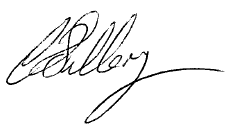 West Coast District Health Board
Te Poari Hauora a Rohe o Tai Poutini
Corporate Office
Telephone 03 768 0499
High Street, Greymouth
Fax 03 768 2791
West Coast District Health Board
Te Poari Hauora a Rohe o Tai Poutini
Corporate Office
Telephone 03 768 0499
High Street, Greymouth
Fax 03 768 2791
13 May 2020
Wendy Pond
Secretary, Manu Waiata Restoration & Protection Society
2225 Wyuna Bay Road
Coromandel 3581
Email: [email address];
[FYI request #12439 email]; Dear Wendy
RE Official information request WCDHB 9406
We refer to your email dated 13 March 2020 requesting the following information under the Official
Information Act from West Coast DHB regarding clarification of our responses to Official Information
Act requests WCDHB 9391 and WCDHB 9394. Specifically related to Buller River 1080 aerial operation
November 2019.
May I please ask for this clarification:
1. The conditions for permission for use of aerial poisoning in catchments of the Buller river that
resulted in carcasses being washed up in public places, were written by the Medical Officer of
Health. She did not audit the operation.
The aerial 1080 operation (Te Maruia Combined, EPA Code 19/1228/CB/GRYPH) did not result in
carcasses being washed up in public places. This operation was carried out in the Lewis Pass National
Reserve near Maruia. The Maruia River is in the operational area and, while this river eventually
flows into the Buller River, the operational area is 140 km upstream from the mouth of the Buller
River at Westport where carcasses were found. The Medical Officer of Health did sign off the
permission for the Te Maruia aerial operation and you are correct that she did not personally carry
out a field audit of the operation.
2. Without being present and without an audit, by what means does the HSNO Enforcement
Officer know that the conditions of permission were adhered to?
You have assumed that because a field audit was not carried out, no audit of this operation was
done. This is not correct. All operations where public health permission is issued for the use of
specified vertebrate toxic agents (VTAs), including 1080, are audited. Our audit begins when the
application is received and supporting documentation is checked. The permission itself also specified
the additional reporting that is required from the operator, before, during and after the operation is
completed. This documentation is reviewed by a public health HSNO officer to check that all
permission conditions have been complied with. One incident of breach of conditions for this
operation did occur involving the sowing of baits in an exclusion area near a hut. This was fully
investigated and reported to the Environmental Protection Agency as required.
 3. Who is responsible for ensuring the safety of public health when an aerially dispersed VTA is
used, and when effects occur outside the boundaries of the permitted operation?
3. Who is responsible for ensuring the safety of public health when an aerially dispersed VTA is
used, and when effects occur outside the boundaries of the permitted operation?
The VTA operator is responsible for complying with the conditions of their public health permission
and the public health service issuing the permission is responsible for monitoring and audit of the
operator’s compliance with these conditions.
I trust that this satisfies your interest in this matter.
Please note that this response, or an edited version of this response, may be published on the West
Coast DHB website after your receipt of this response.
Yours sincerely
Carolyn Gullery
Executive Director
Planning, Funding & Decision Support

